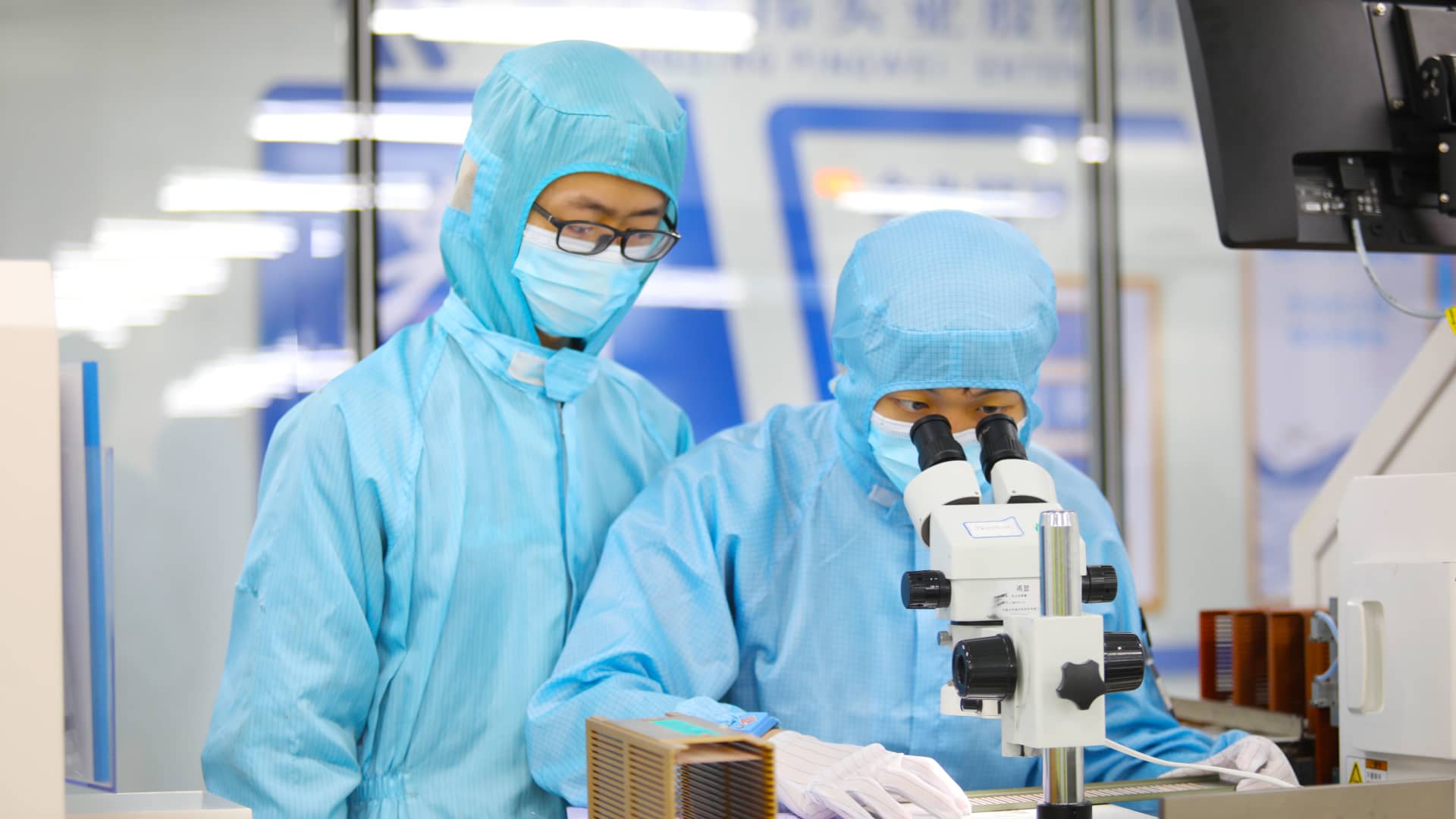Don’t underestimate China’s ability to build its own advanced chips despite U.S. curbs, tech analysts say


CHONGQING, CHINA – MAY 4, 2023 – Young technicians test the quality of electronic chips at a dust-free production workshop in Chongqing, China, May 4, 2023.
CFOTO | Future Publishing | Getty Images
Industry analysts are optimistic that Chinese chip makers will develop their own advanced semiconductors despite Washington’s attempts to cut the country off from accessing or manufacturing the technology.
“I don’t underestimate China’s ability and resolve to find a way to build next generation technologies and to also utilize some lagging technologies to still build really important products,” Daniel Newman, CEO and principal analyst at research firm Futurum Group, told CNBC.
Chinese companies such as Huawei and Alibaba are studying methods to develop cutting-edge artificial intelligence performance with fewer or less powerful semiconductors, or combine different chips to reduce reliance on a single hardware, according to a report by The Wall Street Journal.
Industry experts believe it will be a “challenge” for these Chinese tech firms, but some experiments have shown “promise,” the WSJ reported.
Paul Scharre, vice president and director of studies at the think tank the Center for a New American Security, said that “nothing’s impossible”
“I certainly think in the long run, we should expect the Chinese to be able to make these technological advancements. It’s quite possible that they’re able to do so faster than maybe others might expect,” he said.
In a retaliatory move to Washington’s efforts to cut China off from advanced chip tech, China banned key infrastructure operators in the country from buying products from U.S. chip giant Micron Technology in May. Washington also reportedly urged South Korea to not let its chip makers fill Micron’s void in China.
Nvidia founder and CEO Jensen Huang said last week that the resources China is dedicating into its chip industry is “quite massive, so you can’t underestimate them.”
China is pouring more than 1 trillion Chinese yuan ($140 billion) into its chip industry, according to a Reuters report. Domestic chip makers already benefit from government subsidies and state-backed research projects.
As a result, there are “many GPU startups in China” and existing players have to “run very fast ourselves” in order to stay in the competition, Huang told media at the Computex Taipei 2023 event last week. GPUs, or graphics processing units, are used to power AI applications.
China could also pursue dominance in legacy chips where it is already making headway, analysts believe.
“China is showing good progress in making chips based on mature technology,” said Charles Shi, a principal and senior semiconductor analyst at asset management firm Needham & Company.
Mature technology refers to processes involved in making 28-nanometer or larger chips — generally considered legacy chips, with higher numbers denoting older technology. “These chips are increasingly important for the automotive industry,” said Shi. These 28-nanometer chips are widely used in automobiles, consumer electronics, among other products.
U.K.-based analysis provider Total Telecom said that China has acquired competency in 28-nanometer and 14-nanometer chip manufacturing back in 2021.
The demand for 28-nanometer chips is expected to more than triple by 2030, creating a market worth $28.1 billion, according to consultancy International Business Strategies Inc.
“I certainly think that big Chinese chip makers will be able to survive building legacy chips and there’s a very healthy market for legacy, older model chips,” said Scharre.
“There’s absolutely a lot of money to be made and opportunity in legacy chips versus China’s ability to manufacture the most advanced chips, which, at least in the near term, they’re not going to be able to do and will take a really focused amount of resources and attention and human capital to get to,” he added.